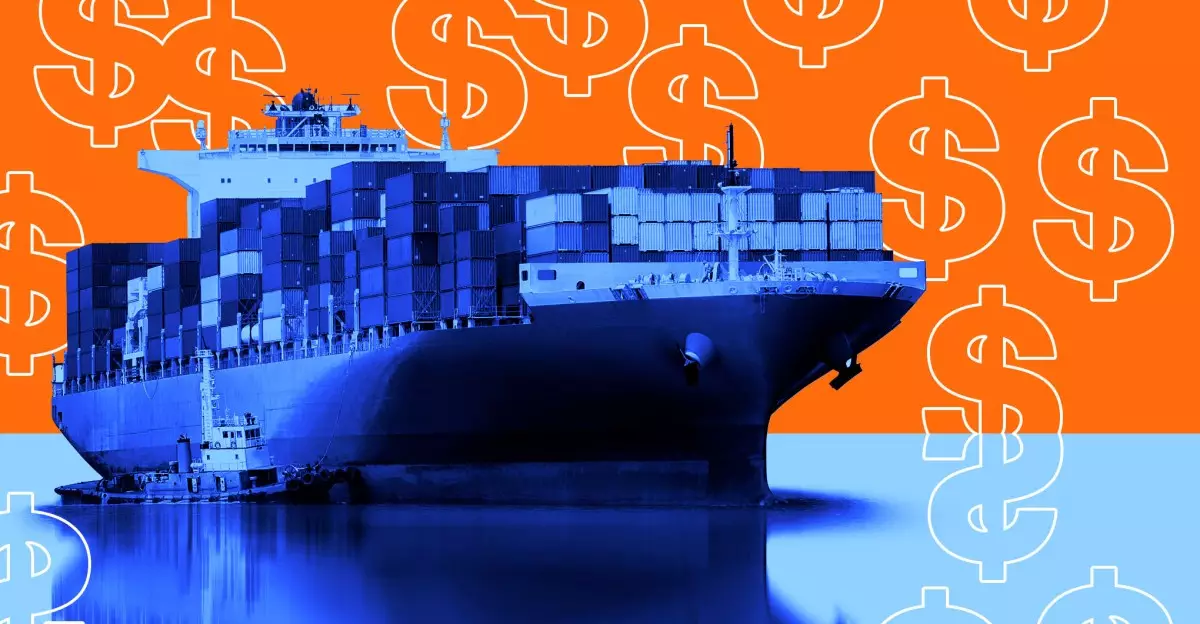The de minimis exemption, a little-known regulatory provision that allowed packages valued under $800 to enter the United States without incurring tariffs, officially expired on May 2, 2025. This change, catalyzed by President Donald Trump’s recent tariff policies, threatens to upend the way consumers access affordable goods from international retailers, primarily those shipping from China and Hong Kong. It’s an alarming time for online shoppers and e-commerce businesses alike, particularly as the landscape shifts beneath their feet.
Just last year, an astonishing 1.4 billion packages took advantage of this exemption, significantly easing the financial burden on consumers and small retailers. For many, this meant that shopping on platforms like Temu or Shein felt like a bargain haven. However, the removal of the de minimis rule is not just an administrative technicality; it has profound implications for the cost of goods, accessibility, and even the structure of e-commerce itself.
A Surprising Turn of Events
Initially, the Trump administration announced a temporary halt to this tariff rollout in February, likely in response to the chaotic reactions from both consumers and logistics providers. The United States Postal Service attempted to navigate this sudden policy shift by suspending shipments from China and Hong Kong, only to revert to their original protocols as confusion and disruptions mounted. At that moment, it was clear that the systems responsible for processing the sheer volume of international packages were ill-equipped to manage such a drastic change in policy. Once again, consumers found themselves grappling with unexpected fees—an unwelcome surprise that most were neither prepared for nor aware of.
The administration framed the end of the exemption as a necessary measure to combat the influx of illicit goods, including synthetic opioids, which supposedly leveraged the previous tariff-free landscape. However, this assertion raises critical questions. Are these new tariffs a truly effective means of curbing harmful substances? Or is it more of a convenient narrative to rationalize increasing overall prices for the American consumer?
Feasible Solutions or Just More Complexity?
The proposed tariff structure is meant to simplify the process, yet it is anything but straightforward. For low-value packages sent through mailing services like USPS, the new fee system could result in a staggering 90% tax on the value of the item, or an outright fee of $75 per item. Meanwhile, packages sent using private carriers like DHL will face even steeper costs, burdened with a mix of baseline tariffs and product-specific duties that may rise above 20%. This haphazard approach gives rise to significant concerns about cost inflation and the availability of imported goods.
It’s also crucial to examine whether U.S. Customs and Border Protection (CBP) is prepared to handle the tidal wave of low-value packages that enter the country every day. Estimates suggest that processing these de minimis packages could run the U.S. about $3.2 billion annually—an exorbitant figure that begs the question: is it worth the potential benefit, especially when consumer costs are likely to rise as a result?
The Retail Landscape’s New Normal
As companies like Shein, Temu, and even Amazon tweak their logistics models in response to these tariff changes, we are left pondering the future of affordable online shopping. The imposition of new tariffs will inevitably increase the costs for end-users, and while companies may absorb some immediate expenses, those costs may eventually be passed on to consumers. Shoppers could find themselves either paying higher prices or potentially encountering a reduced array of products as retailers scale back their offerings in the face of these tariffs.
The fallout from the de minimis exemption’s expiration won’t just hit consumers in their wallets; it may also discourage them from frivolous spending. The lower the availability of affordable goods, the more cautious consumers will become. In that sense, this regulation may inadvertently curtail online shopping habits, driving people back to local storefronts or sustainable options. In a world increasingly reliant on convenience and variety, the implications of such a shift could be long-lasting.
A Call to Action for E-Commerce
The winding roads of the tariff and exemption landscape reveal a pressing need for companies and consumers to re-strategize their approach to purchasing online. For e-commerce to thrive in this new terrain, businesses must adapt quickly, leveraging technology and innovative strategies to keep costs as low as possible. Meanwhile, consumers should stay informed, actively seeking out changes in the landscape and standing ready to make conscious buying decisions, lest they become ensnared in a complex web of tariffs and fees.
As this reality settles in, the retail ecosystem faces an existential crossroads, where adaptability and consumer empowerment will define the future of shopping.


Leave a Reply